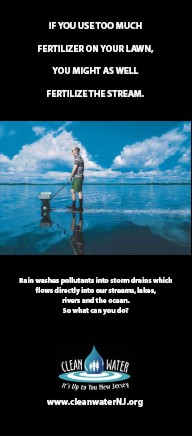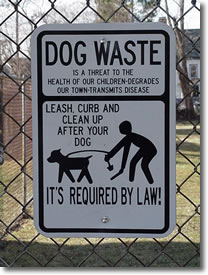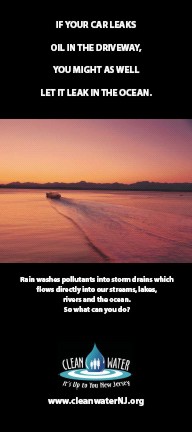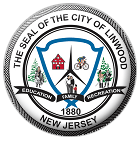Solutions to Stormwater Pollution
- Protect our water by following a few easy steps…
- Water Cycle Glossary of Terms
- Learn More About Water
- Contact
Protect our water by following a few easy steps…
As a homeowner, resident, business or other member of the New Jersey community, it is important to know these easy things you can do every day to protect our water.

Limit your use of fertilizers and pesticides
- Do a soil test to see if you need a fertilizer
- Do not apply fertilizers if heavy rain is predicted
- Look into alternatives for pesticides
- Maintain a small lawn and keep the rest of your property or yard in a natural state with trees and other native vegetation that requires little or no fertilizer
- If you use fertilizers and pesticides, follow the instructions on the label on how to correctly apply it
- Make sure you property store or discard any unused portions
Proper use and dispose of hazardous products
- Hazardous products include some household or commercial cleaning products, lawn and garden care products, motor oil, antifreeze, and paints
- Do not pour any hazardous products down a storm drain because storm drains are usually connected to local bodies of water and the water is not treated
- If you have hazardous products in your home or workplace, make sure you store or dispose of them properly; read the label for guidance
- Use natural or less toxic alternatives when possible
- Recycle used motor oil
- Contact the Atlantic County Utilities Authority (ACUA) at 609-272-6950, visit their website at www.acua.com, refer to the ACUA’s 2009 Linwood Recycling Schedule, distributed to your home by the ACUA in January 2009, or contact the or the City of Linwood Public Works Department at 609-926-7994.
Keep pollution out of storm drains
- Municipalities and many other public agencies are required to mark certain storm drain inlets with messages reminding people that storm drains are connected to local bodies of water
- Do not let sewerage or other wastes flow into a stormwater system

- Linwood enforce local pet waste rules as per Chapter 86, Animals, under the Code of the City of Linwood. An example is requiring pet owners or their keepers to pick up and properly dispose of pet waste dropped on public property or other people’s property
- Make sure you know the requirements of the City of Linwood and comply with them; it’s the law
- And remember to:
- Use newspapers, paper bags, or pooper-scoopers to pick up wastes
- Dispose of wrapped pet waste in the trash or unwrapped in a toilet
- DO NOT WRAP PET WASTE IN (NON-BIODEGRADABLE) PLASTIC BAGS
- Never discard pet waste in a storm drain
Do not feed wildlife
- Do not feed wildlife, such as ducks, geese, and seagulls in public areas
- The City of Linwood enforces a rule that prohibits wildlife feeding in public areas, including Birch Grove Park
 Don’t litter
Don’t litter
- Place litter in trash receptacles
- Recycle! Recycle! Recycle!
- Volunteer for community cleanups
Dispose of yard waste properly
- Keep leaves and grass out of storm drains
- Follow yard waste collection rules according the ACUA guidelines distributed to your home by the ACUA in January 2009
- If you have misplaced your ACUA Recycling Guidelines, copies are available in the Linwood City Clerk’s Office
- Use leaves and grass clippings as a resource for compost
- Use a mulching mower that recycles grass clippings into the lawn

A GUIDE TO HEALTHY HABITS FOR CLEANER WATER
- Pollution on streets, parking lots and lawns is washed by rain into storm drains, then directly to our drinking water supplies and the ocean and lakes our children play in. Fertilizer, oil, pesticides, detergents, pet waste, grass clippings: You name it and it ends up in our water.
- Stormwater pollution is one of New Jerseys’ greatest threats to clean and plentiful water, and that’s why we’re all doing something about it.
- By sharing the responsibility and making small, easy changes in our daily lives, we can keep common pollutants out of stormwater. It all adds up to cleaner water, and it saves the high cost of cleaning up once it’s dirty.
- As part of New Jersey’s initiative to keep our water clean and plentiful and to meet federal requirements, many municipalities and other public agencies including colleges and military bases must adopt ordinances or other rules prohibiting various activities that contribute to stormwater pollution. Breaking these rules can result in fines or other penalties.
Water Cycle Glossary of Terms
The water supply of Earth is a required element for life to exist and thrive. The water cycle is a continuous cycle that keeps water moving on and around Earth in different forms. The different stages of the water cycle include evaporation, condensation, precipitation, and collection. Each stage of the cycle leads to the next stage, and each stage is an important part of a process that helps to water plants, fill cisterns, dry up puddles, and remove floodwaters.
Aquifer: An aquifer is an underground layer that contains groundwater.
Atmosphere: A unit of atmosphere measures the air pressure at sea level, which is about 14.7 pounds per square inch.
Climate: The climate of a location includes all of the weather conditions for this location over an extended period of time.
Cloud: A cloud is a visible mass of small water droplets or tiny ice crystals that are suspended in the atmosphere.
Cloud Condensation Nuclei: Water vapor surrounds tiny particles, condensing in clouds to become raindrops.
Condensation: Condensation is the process by which water vapor changes into liquid.
Current: Currents are predictable and steady flows of fluid in a larger body of fluid.
Density: Density describes the amount of things in a specific space.
Dew Point: Dew point is the temperature at which water in the air condenses to become water droplets near the ground.
Ecosystem: An ecosystem is a community of living and nonliving things in an area.
Erosion: Erosion happens when soil is worn away, usually by wind, water, or ice.
Evaporation: Evaporation is the process of water changing into water vapor.
Evapotranspiration: When moisture from the soil evaporates into the atmosphere or when transpiration from plants occurs, this is called evapotranspiration.
Fog: Clouds near the ground are known as fog.
Freshwater: A lake, river, or spring is a source of freshwater, which animals can drink.
Glacier: A glacier is a mass of ice that moves slowly across a land mass.
Great Lakes: The Great Lakes are the biggest freshwater bodies of water in the world, located in the United States.
Greenhouse Gas: Gases in the atmosphere that absorb solar heat reflected by Earth's surface, contributing to warming of the atmosphere, are greenhouse gases.
Groundwater: Groundwater is water found in an aquifer.
Humidity: The amount of water vapor in the air is the humidity.
Ice: Ice is water in solid form.
Ice Cap: An ice cap is an area of less than 19,000 square miles covered by ice.
Ice Sheet: Ice sheets are glacial ice areas that cover a large expanse.
Lake: A lake is a body of water that is surrounded by land.
Microscopic: Microscopic describes something very small.
Pollutant: A pollutant is a substance that harms a natural resource.
Precipitation: Precipitation includes all types of water that fall to Earth.
River: A river is a big stream of fresh water that flows.
Runoff: When fluid overflows from a farm or factory, it's known as runoff.
Snowmelt: Melted water from snow is snowmelt.
Temperature: The level of heat or cold, measured by a thermometer, is temperature.
Transpiration: Water that evaporates from plants is transpiration.
Vapor: Vapor is liquid that is suspended in air.
Water Cycle: Water moves between the land, bodies of water, and atmosphere in a process known as the water cycle.
Weather: Weather describes the state of the atmosphere, and it includes atmospheric pressure, temperature, humidity, cloudiness, precipitation, and wind.
Wind: Wind is air that moves from areas of high pressure to low-pressure zones.
Learn More About Water
- What Is the Water Cycle? The water cycle is the path water takes as it moves around on Earth.
- The Water Cycle: Water never stops moving between land, bodies of water, and the air.
- Learn About the Water Cycle: The sun helps to power the water cycle by causing evaporation.
- Overview of the Water Cycle: The water cycle has no beginning and no end.
- The Water Cycle: Earth only has a specific amount of water, and the water cycles continuously through stages such as evaporation, precipitation, and collection.
- The Fundamentals of the Water Cycle: The water on Earth is always moving from one place and form to another.
- The Water Cycle: As the sun shines, it turns water into a vapor that rises and eventually gathers as clouds.
- Water Cycle Information: Without the water cycle occurring all the time, there couldn't be life on Earth.
- The Water Cycle: Watch this video to learn how energy from the sun makes water move and change form in the water cycle.
- Water Cycle: An Easy Explanation for Kids: The water cycle provides fresh water to plants and animals in a repeating process.
- 100 Ways to Conserve Water: Learn all the ways you can help to conserve water!
Contact Information
For more information on stormwater related topics, visit www.cleanwaternj.org . Additional detailed technical information is available at www.njstormwater.org or www.nonpointsoruce.org. Additional information is also available at U.S. Environmental Protection Agency websites: www.epa.gov/npdes/stormwater or www.epa.gov/nps , or by contacting the New Jersey Department of Environmental Protection, Division of Water Quality, Bureau of Nonpoint Pollution Control, Municipal Stormwater Regulation Program at 609-633-7021.



 Accessibility Statement
Accessibility Statement